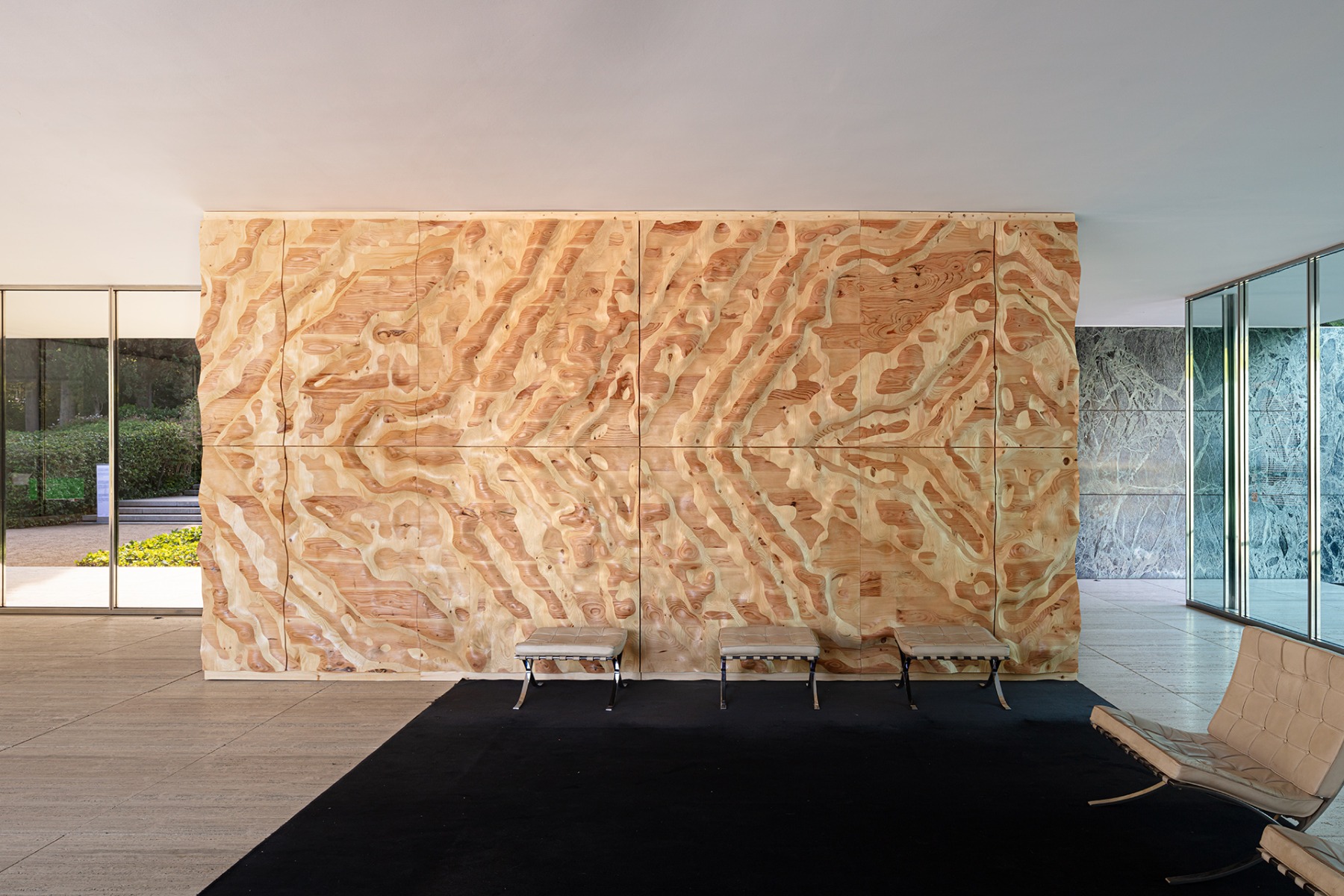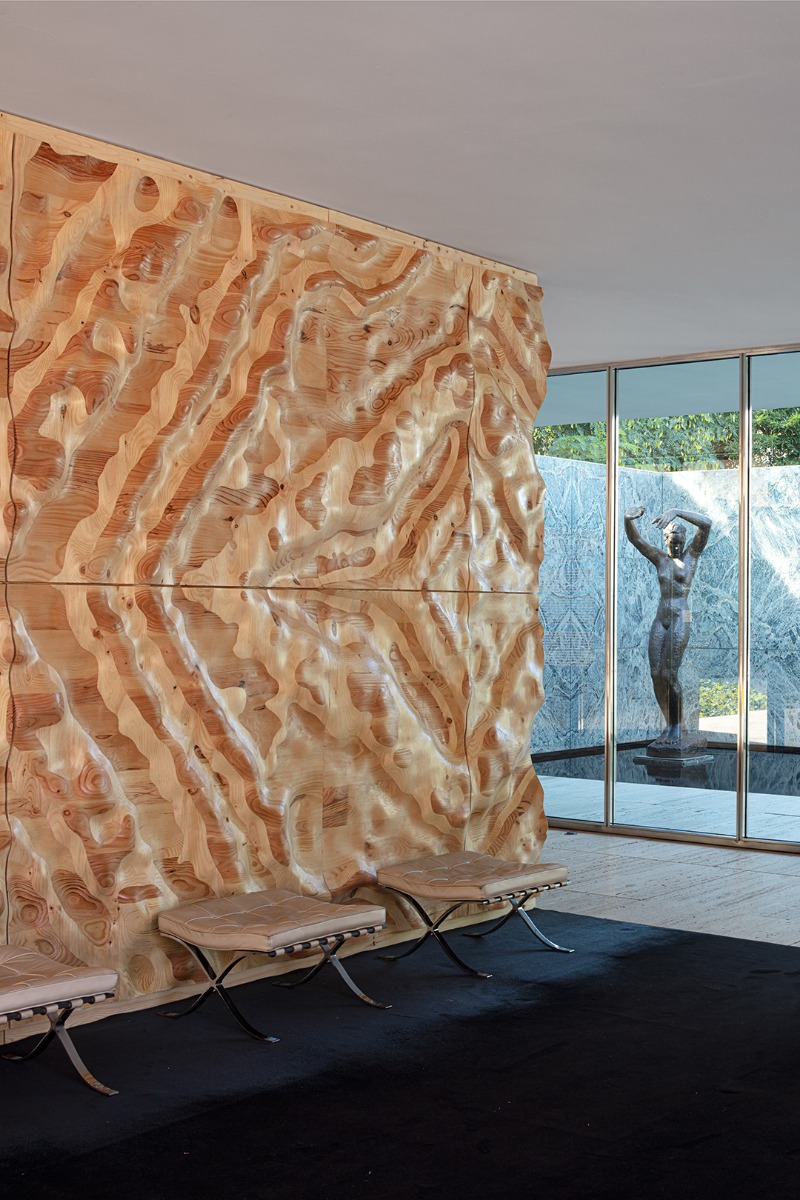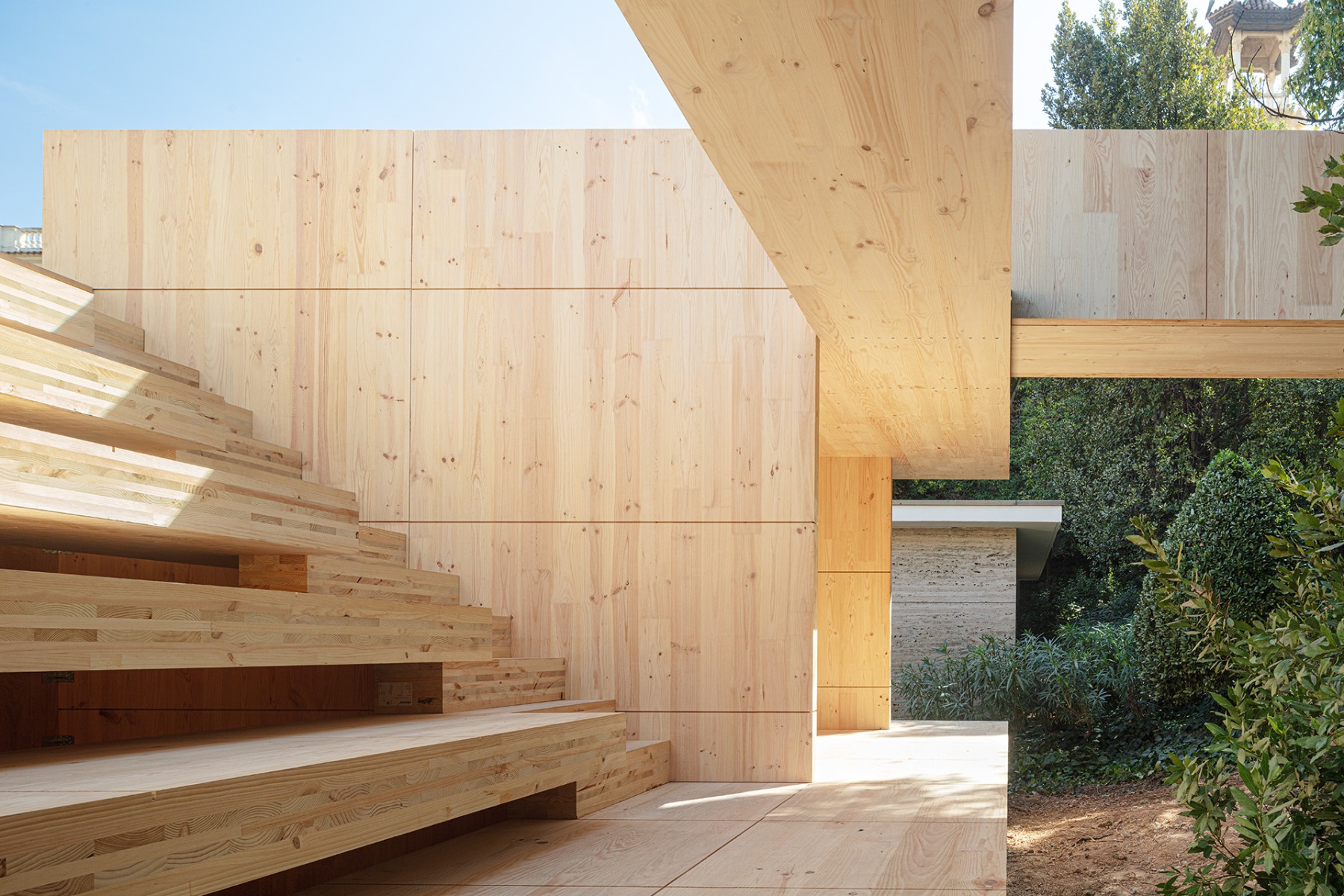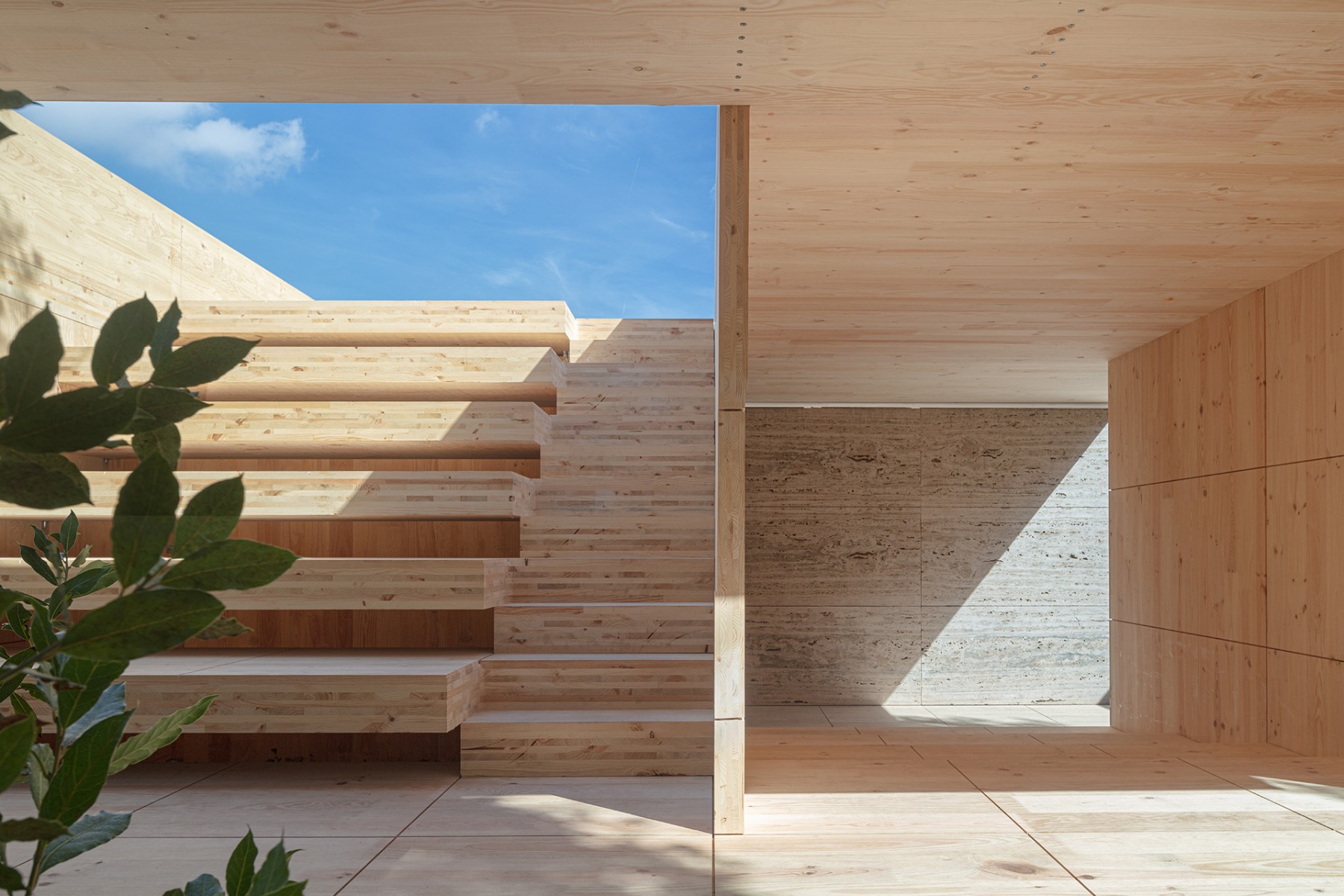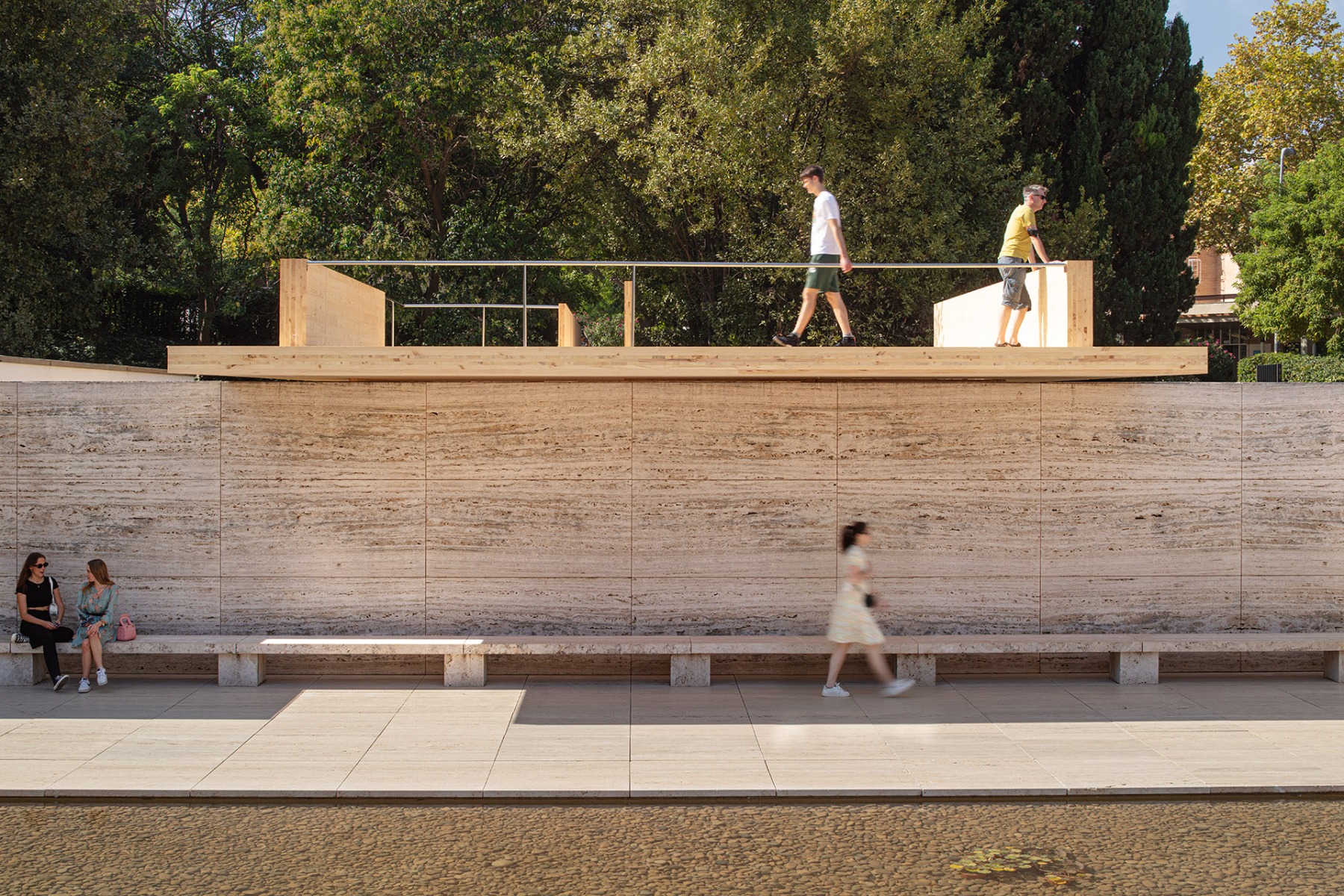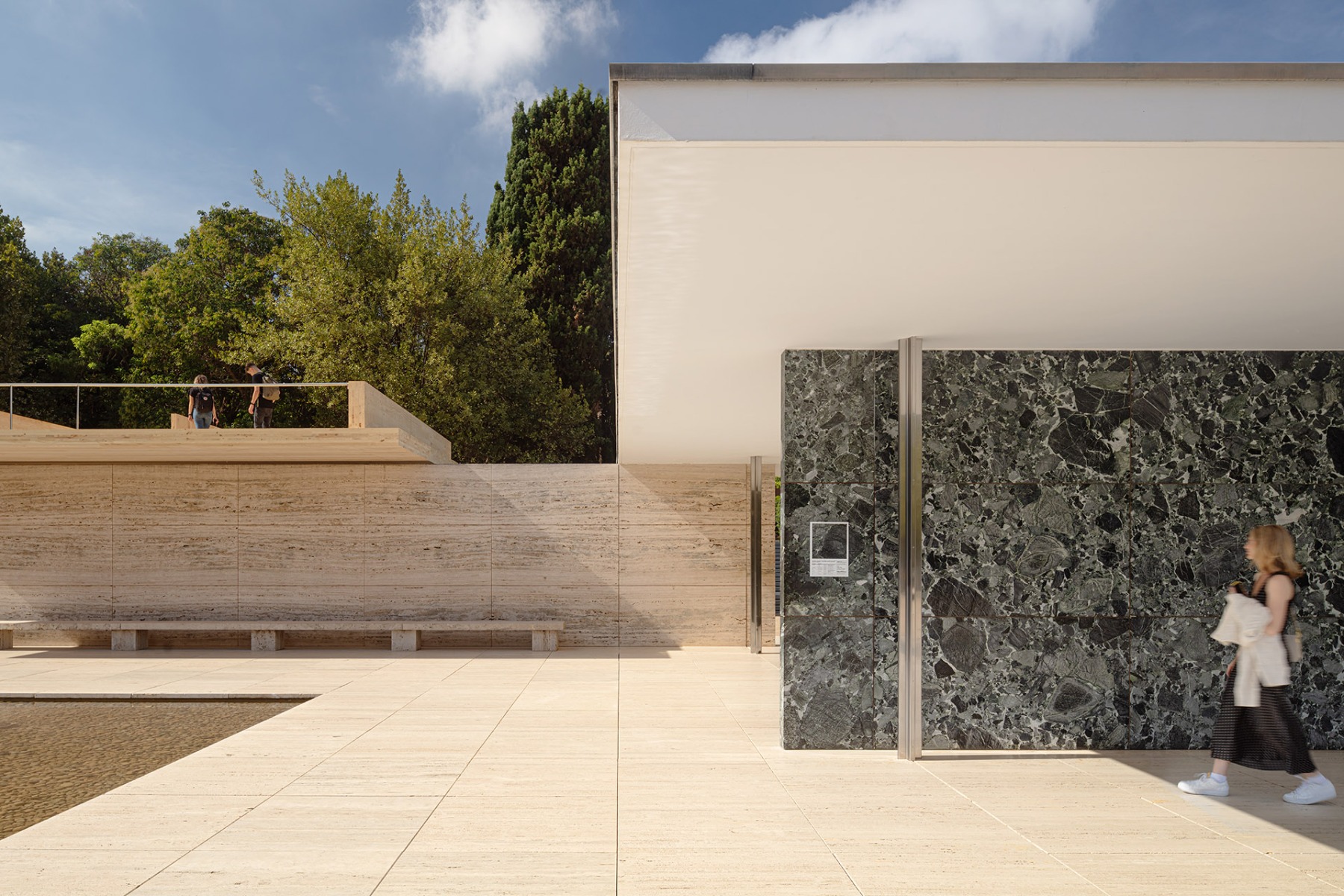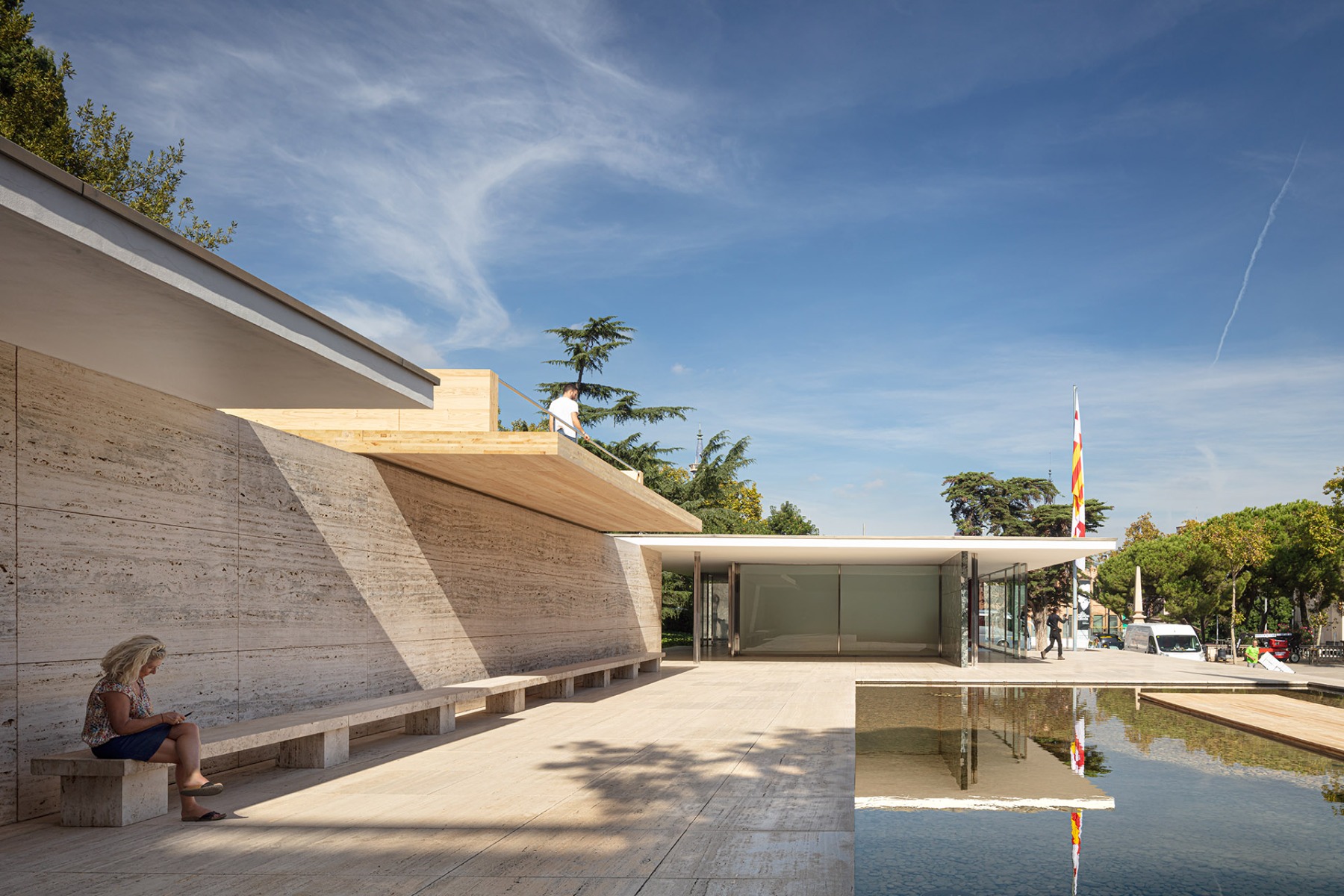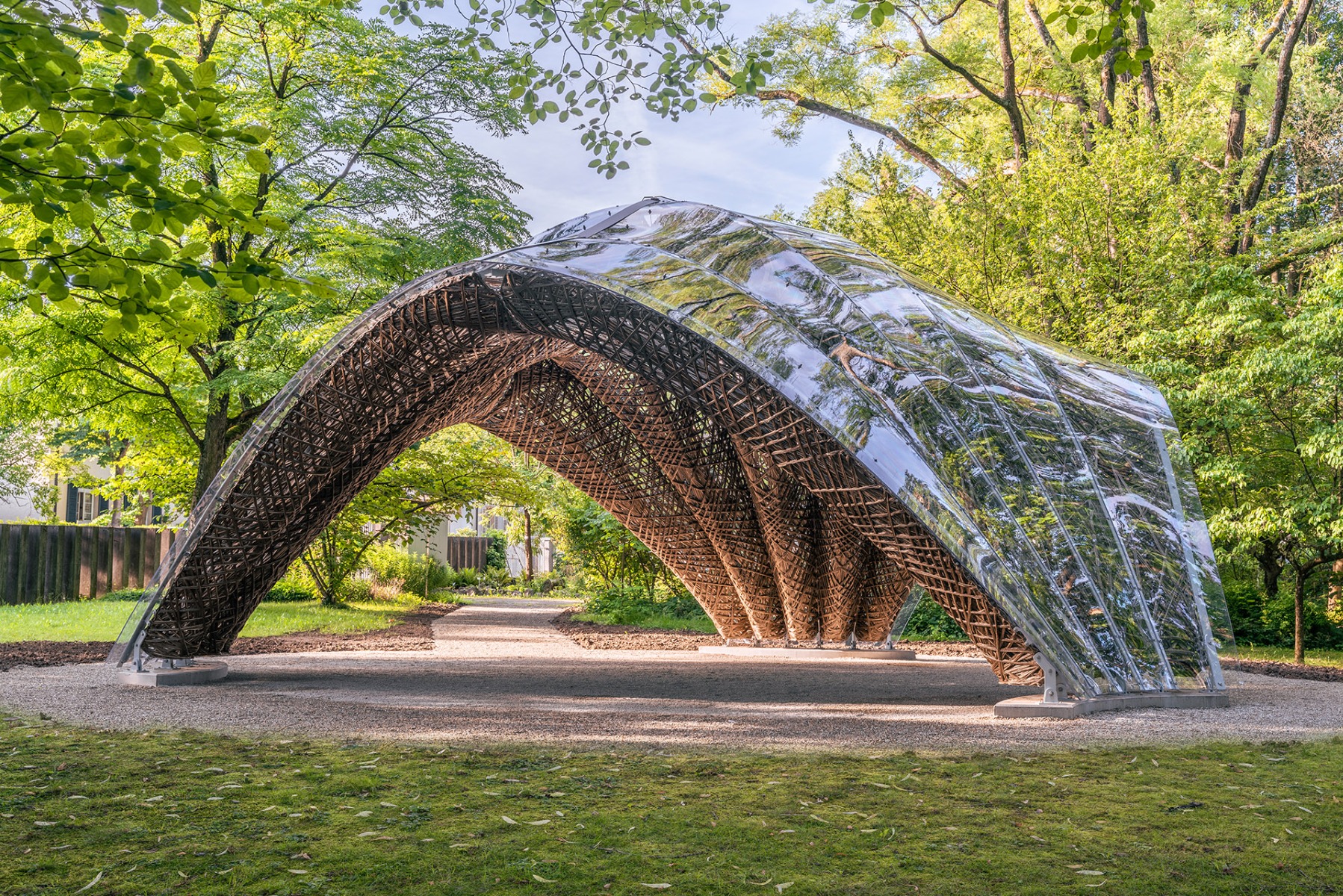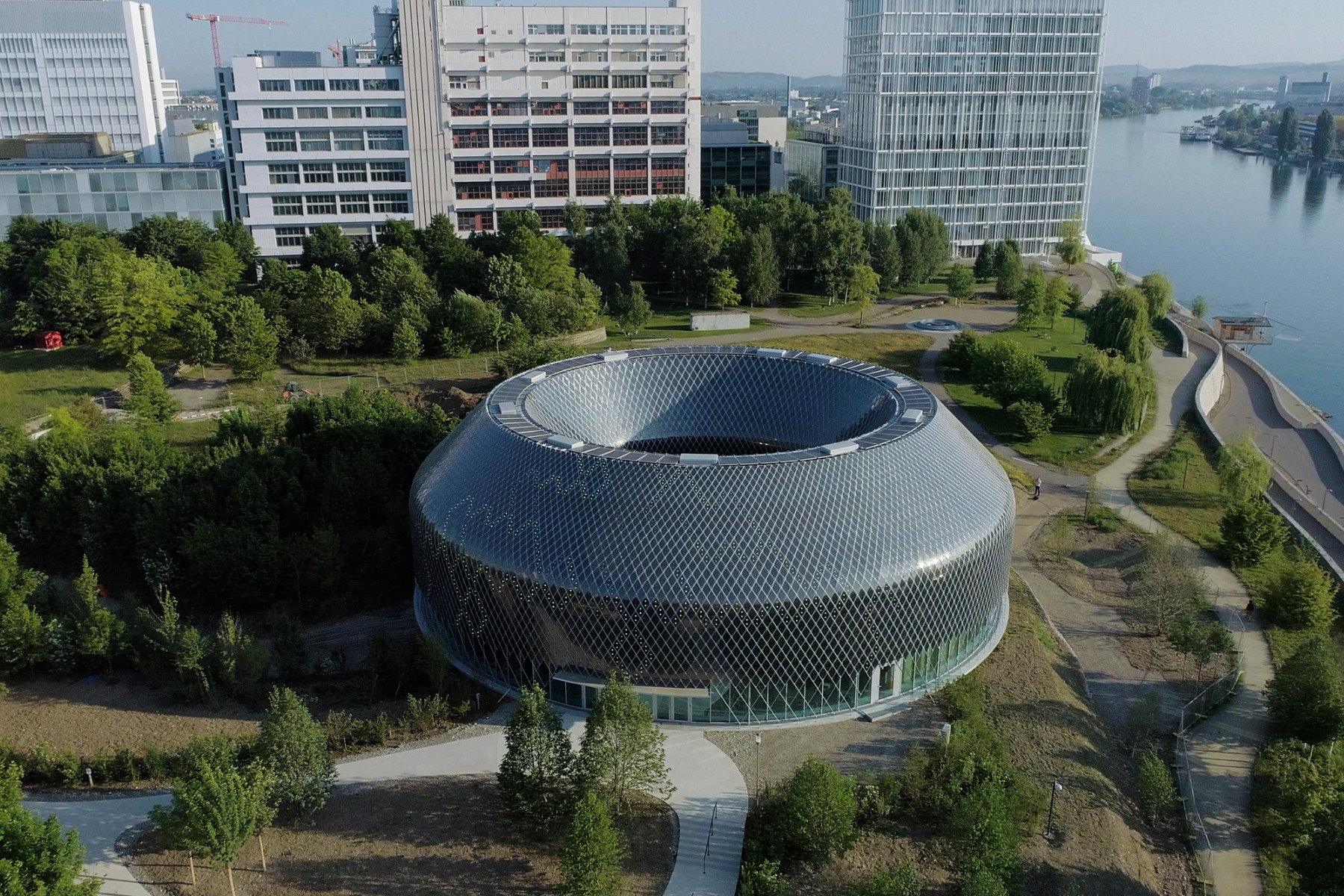Mass is more versus less is more
Mies Van Der Rohe Pavilion in Barcelona - but Made of Wood, Please

© Adriá Goula
Climate neutrality was not an issue for Mies van der Rohe when he designed the pavilion for the 1929 World's Fair. But how would he build it today? Would he replace marble and travertine with wood?


© Adriá Goula
The Mies van der Rohe Pavilion in Barcelona is a magnet for architects. No architect comes to the city without paying a visit to the famous building. The impact of installations that do not take place there all that often is correspondingly great. “Mass is More" can now be seen until 9 October. The exhibition is dedicated to the theme of how the magic of marble and travertine could be recreated with CLT. And not entirely unimportant: what would be the carbon footprint of a building made of wood?
The authors work with panes, light, shadows and surfaces just as the original does. Instead of the green marble wall in the main room, the interplay of different wood colours currently provides the visual attraction there. Different woods were laminated and milled to different depths.


© Adriá Goula
Thus, the surface is wavy and, depending on the depth of the milling, different woods with different colours and grains appear. In the same room, a 4,8 m long diorama shows the path of wood as a carbon store from the forest to the city.


© Adriá Goula


© Adriá Goula
Visitors can interactively compare the environmental impact of the Barcelona Pavilion of 1929 and that of the installation made of solid wood. For this purpose, the components roof, walls, columns and floor were taken into account. The comparative analysis includes the embodied carbon in each element in terms of the energy consumed in extraction, manufacturing, transportation and assembly. On boards on individual components, visitors can compare CO2 emission in kg, transport distance in km and the number of work steps from the extraction of the material to the assembled component.


© Adriá Goula
With their installation, the artists want to give an impulse as to how wood could be used on a large scale in cities. Wood is still rather rare as a building material in Spain. The discussion about this is sure to be sparked among visitors to the pavilion - sometimes certainly also as a complaint about the fact that the climate discussion is currently covering everything, including the popular Mies Pavilion.
Architecture: Daniel Ibánez (IAAC), Vicente Guallart (IAAC), Alan Organschi (Bauhaus Erde)
Project participants: IAAC, Bauhaus Earth, Mass Madera, Built by Nature
Location: Pavelló Mies Van Der Rohe, Av. Francesc Ferrer i Guàrdia, 7, 08038 Barcelona (ES)
Installation: Bestiario
Bauunternehmen: Finsa and Xilonor



